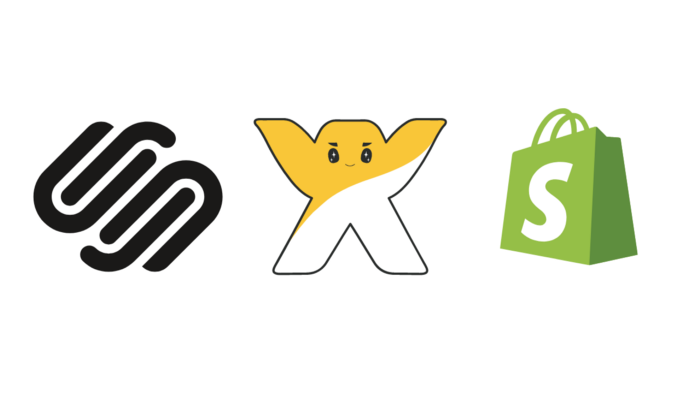Want to start an eCommerce store but don’t know which platform to choose?
Don’t worry. You are at the right place.
There are many different platforms that are specifically designed for eCommerce websites. All of them have their advantages and disadvantages, and your choice needs to be based on your level of expertise and the type of online store you want to start.
In today’s article, we will highlight some of the best eCommerce platforms that offer beginner-friendly setups and many tools that are crucial to any online store.

-
Shopify
Shopify is the most used platform for eCommerce websites, and there is a good reason for that. Shopify has more than 2.1 million active users and more than $155B of sold goods until now. Almost 87% of all merchants use Shopify as the base of their online store, and here is why.
First of all, Shopify is a beginner-friendly platform that doesn’t require a lot of knowledge in order to make your online store. It has 73 mobile-optimized themes that are one-click away from installing to your store. Nine of them are free, and others are paid.
Additionally, it offers many of the most popular payment options depending on the country you are from. You can choose to accept payments from PayPal, credit cards, or Google and Apple Pay.
Shopify also offers easy-to-use inventory management features and a drag-and-drop build, which is perfect for beginners.
On top of that, they have an App Store that has some creative and essential tools like the HelpCenterApp, which will set up a 24/7 live chat and FAQ pages. There are many other tools like multi-currency apps and review finder.
Additionally, they offer many tools that can help you manage your store alone, even if you have many orders. They also have creative features that will help you increase your conversion rate and attract more customers.
Shopify’s basic plan starts at $29/month and includes all the main features. It is important to note that they have online credit card rates starting from 2.9% of the transaction + 30¢.
-
Wix
In the beginning, Wix was an online platform for making traditional websites, but they redesigned the platform offering eCommerce functionality. They are not quite as popular as Shopify, but they still hold power over more than 500,000 businesses worldwide.
For starters, you can choose a theme from their free 500+ theme portfolio, specifically designed for eCommerce websites. You can create a store in 90+ different languages, and their cheapest plan starts at $27 per month.
Wix has powerful and essential eCommerce features included in the package, such as abandoned cart recovery, customized checkout page, loyalty programs, discount codes, and customer accounts.
When it comes to payment options, you can integrate payment gateways from their 40+ providers, including Stripe, PayPal, and Square.
One of the best things about Wix is that they don’t charge you for transactions, although standard processing fees may apply.
-
Squarespace
Squarespace is another all-in-one eCommerce platform that is great for building a successful eCommerce website. You can choose from the many pre-made mobile-optimized themes, and if you consider yourself knowledgeable enough, you can even tweak them by using Javascript or CSS.
Squarespace also includes some great plugins into their platforms, such as automating shipping rate, abandoned cart recovery, and customized pop-ups and banners.
All of the major payment options are available, and you can transfer all your funds directly to your bank account.
Squarespace also provides a user-friendly interface and a great inventory management system. It is easy to set up pages, track orders, and manage your customer base from one central location.
Final Words
These are some of the best eCommerce platforms available on the market. You cannot go wrong by choosing either one of them. You just have to compare specific plans and their cost in order to find the best option for your online store.
Among these eCommerce platforms, Shopify is in the game longer than anyone. This makes them more reliable. However, this doesn’t mean that that should be your choice. It all depends on personal preference and the tools that you require for your website.












Add Comment